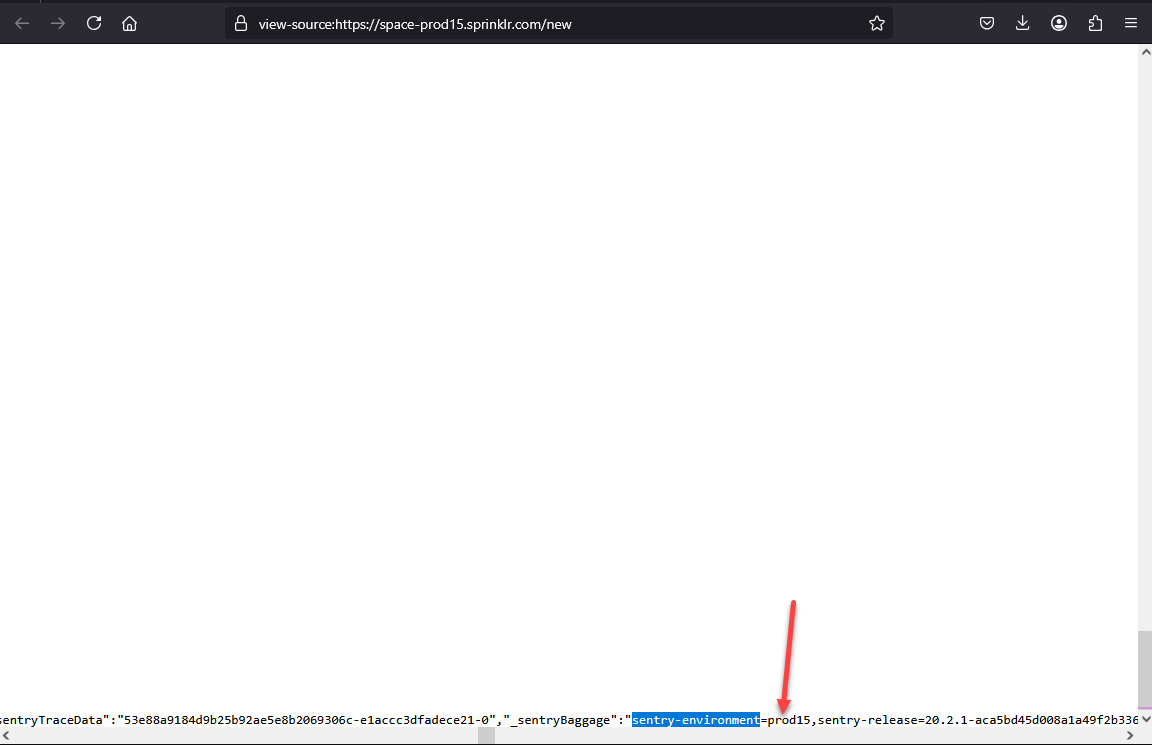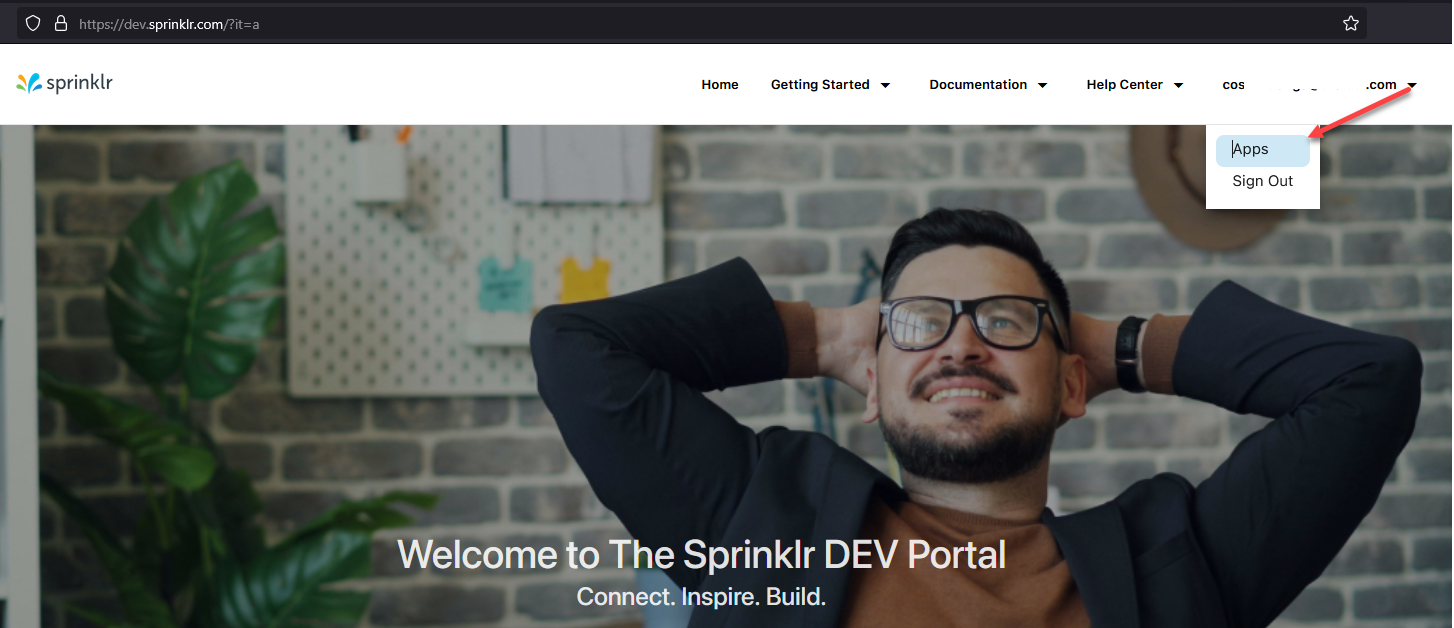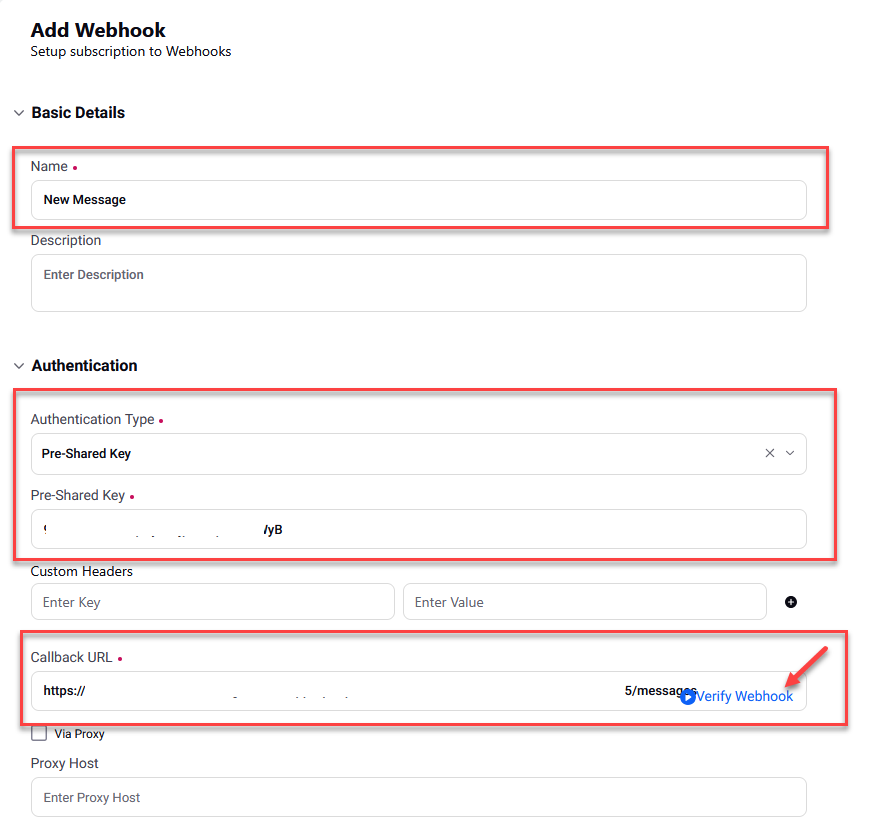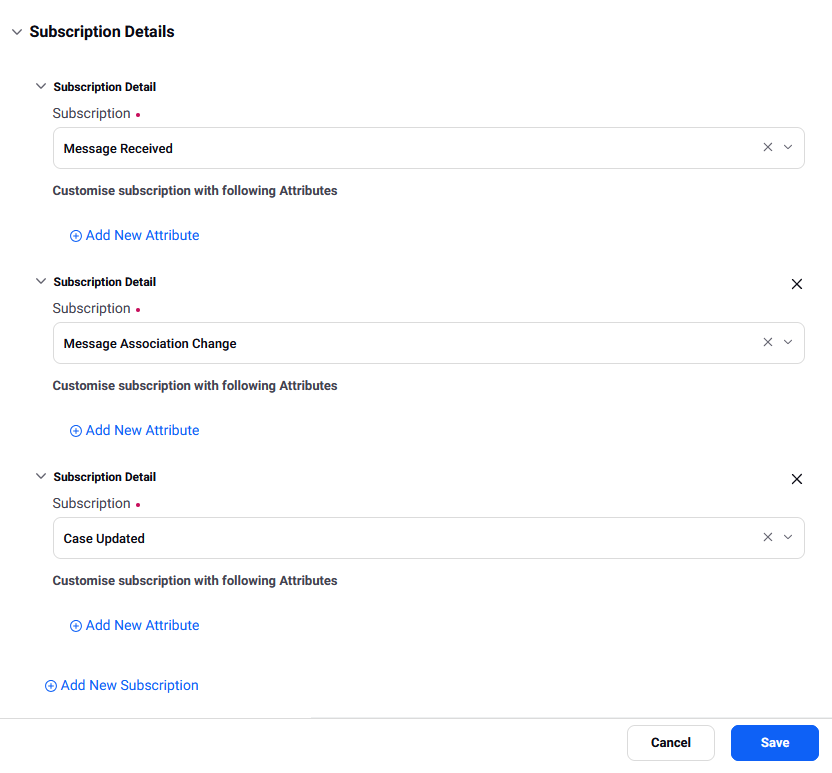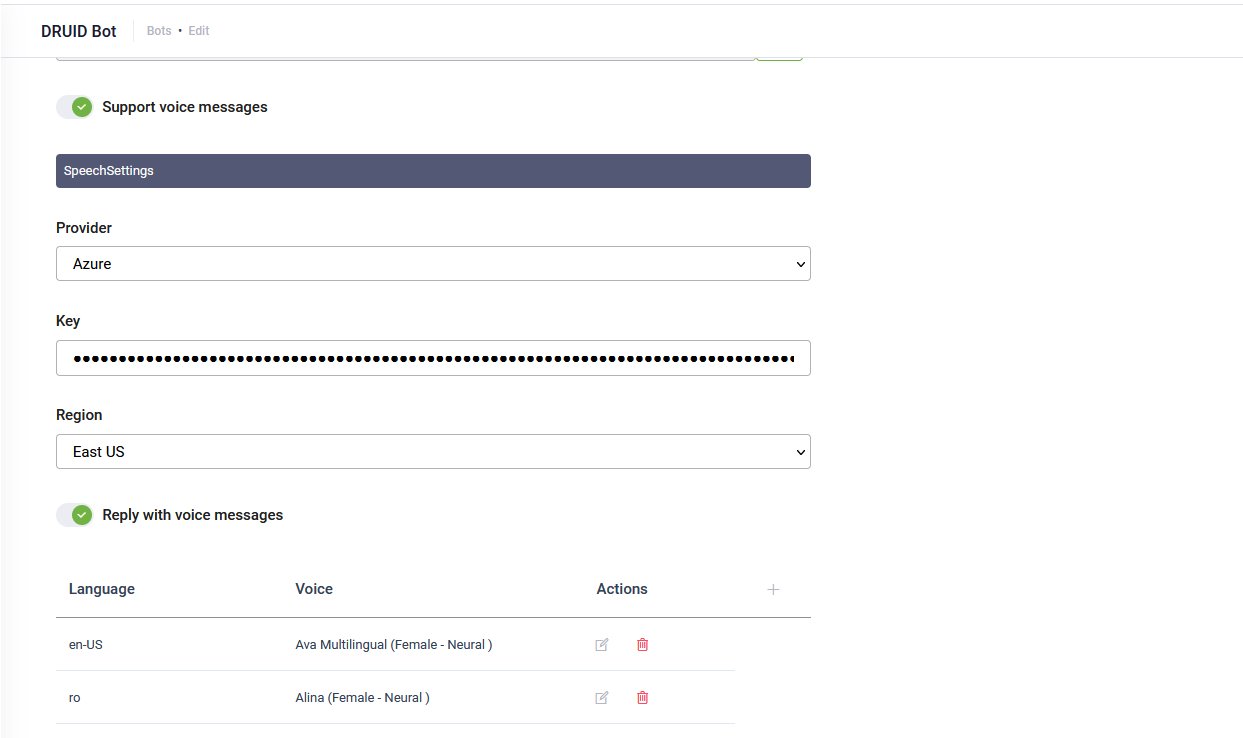Sprinklr
Sprinklr is a customer service platform that lets you connect with your customers through chatbots, live chat, and broadcasts on various channels. You can integrate DRUID bots with Sprinklr to handle user requests within various channels.
Prerequisites
- You need to have a Sprinklr Developer account (using a service account email) to register the application that will be linked to your DRUID bot.
- You need a Client user account on the Sprinklr platform with access to your company's Sprinklr environment.
This section describes how to integrate DRUID chatbots with Sprinklr.
Step 1. Get the Sprinklr platform environment and Campaign ID
- Sign in to the Sprinkler Platform.
- Right click anywhere on the homepage and select View Page Source.
- Press Ctrl+F and search for "sentry-environment". The value of sentry-environment is where your Sprinklr instance is hosted. This is your Sprinkler environment.
- Copy the environment name you will need it to create a Sprinkler app.
- Close the Page source code page.
- Type "Campaigns" in the search bar and select the desired item from the search results.
- The list of defined campaigns appears. Campaigns are used in Sprinklr as the primary tags to categorize outbound messages and thereby effectively organize and collaborate on activities around the campaign such as tasks, assets, messages, workflows, etc.
- Copy the ID of the approved campaign as you will need it to configure the Sprinklr channel in the Druid Portal.
You can now create a Sprinklr app.
Step 2. Create a Sprinklr app
- Sign into Sprinklr Developer Portal.
- Click on your email address appearing at the top right corner and select Apps from the drop-down menu.
- Click on the + NEW APP button to create a new application.
- In the application form, fill in the required fields:
- In the Callback URL field, enter https://www.sprinklr.com.
- Click the Save button at the bottom of the page to save the app. An API Key and Secret are generated for the app.
- Copy the API Key and Secret as you will need them to configure the Sprinklr channel in the Druid Portal.
- Reach out to Sprinklr support to activate your app.
| Field | Description |
|---|---|
| App Name | The name of the application. It is recommended to name your application based on the use case you will be using it for. |
| APIs |
Enable the API for your Sprinklr platform environment, the one you copied at Step 1. |
Now configure the Sprinklr channel in the Druid Portal.
Step 3. Configure the Sprinklr channel in DRUID
- Log in the Druid Portal and from the main menu, select your bot. The bot configuration page appears by default on the Details tab.
- Click the Channels tab, and then click Sprinklr. The channel info section expands.
- Fill in the fields as follows:
- Generate the Webhook Secret.
- Copy the Webhook inbound URL and the Webhook Secret as you will need them to configure the Sprinkler webhook.
- Click the Publish button and wait until the channel is activated.
| Field | Description |
|---|---|
| Environment | The name of the environment you copied at Step 1, substep 4. |
| Campaign ID | The ID of the campaign you copied at Step 1, substep 8. The bot messages will be sent to this campaign. |
| ApiHost |
The Sprinklr API URL. It is in the format: https://api<version>.sprinklr.com. For example: https://api3.sprinklr.com. You can get it from the Sprinklr documentation. |
| API key | The API Key and Secret you copied at Step 2, substep 7. |
| API secret |
Step 4. Create Sprinklr webhook
- Sign in to the Sprinkler Platform.
- Type "webhook" in the search bar and select the item from the search results.
- Click the Add Webhook button at the top-right corner of the page.
- In the webhook configuration page, enter the following details:
- Message Received
- Message Association Change
- Case Updated
- Save the webhook.
From the main menu, click API 2.0 and on the page, click Webhooks.
| Field | Description |
|---|---|
| Name | Enter a webhook name. |
| Authentication Type | Select Pre-Shared Key. |
| Pre-Shared Key | Enter the Webhook Secret you copied from the Druid Portal at Step 3, substep 5. |
| Callback URL |
Enter the Webhook inbound URL you copied from the Druid Portal at Step 3, substep 5. Click the Verify Webhook button available in this field. |
| Subscription |
Add the following subcriptions: |
You have successfully completed the Sprinklr channel configuration.
Receiving and Processing Voice Messages
DRUID supports audio messages only through Microsoft Cognitive Services and ElevenLabs. For Microsoft Cognitive Services, it supports all languages available in the Azure Speech Service. For a complete list of supported languages, refer to Language and Voice Support for the Speech Service.
Here's how it works:
- Receive audio messages. When a user sends an audio message via WhatsApp, the bot will:
- Process the audio recording using Azure Speech/ElevenLabs resources configured in the channel settings.
- Recognize the language for Speech-To-Text (STT) based on the user's language ([[ChatUser]].Language).
- Log in the Conversation History the user message type as 'Audio Recording'.
- Process audio. The bot:
- Converts the audio message to text using Microsoft Cognitive Services/ElevenLabs.
- Uses the converted text to predict the next conversational step.
- Respond. By default, the bot will respond to voice messages with text. You can choose the bot to reply with voice.
To enable voice messages support, follow these steps:
- In the channel configuration page, tap on Support voice messages.
- Select the Speech provider (either Azure or ElevenLabs), then enter the required details:
- For Azure, enter your MS Azure Speech API key and select the region.
- For ElevanLabs, enter your API key.
- By default, the bot replies with text. To have the bot respond with voice, toggle on Reply with voice messages.
- In the table, click the plus icon. A row is added to the table.
- From the Language drop-down, select the bot language (default or additional) and from the Voice drop-down, select the human-like neural or standard voice the chatbot will use to respond to the user.
- Click the Save icon displayed inline. You can add more languages and different voices per language as best suits your needs.
- If the channel has not been published yet, click Publish.
- Click the Save button at the bottom of the page to save the bot configuration.
